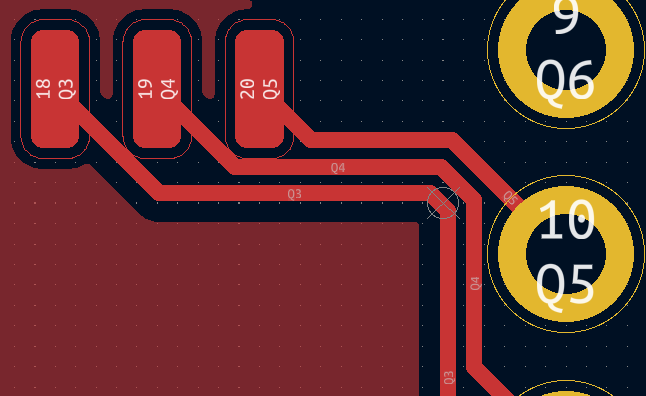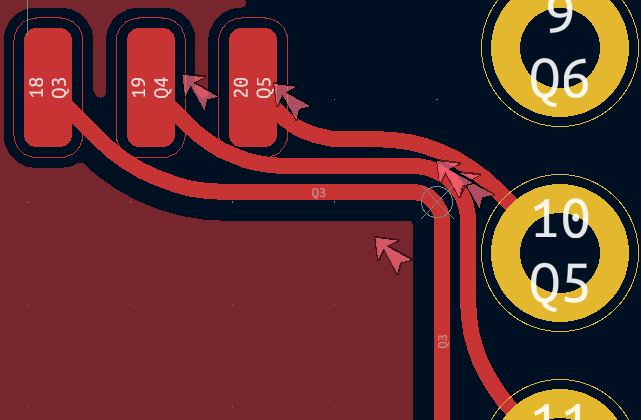Hi. Yes, unfortunately the DRC system is completely inaccessible from Python so there isn't an easy fix for this.
You can fix the DRC errors by altering the original board, the simplest way is to break tracks near the problem so that a smaller radius is formed. Or, reduce the radius parameter when you run the script. You can run the plugin on the selection only, then undo, alter it, run it again, etc.
Until the python interface gets access to the DRC system (which might be never) there isn't much I can do on this.


 When the plugin runs, it has to process each track sequentially. So the first track will do this, an obvious clearance violation:
When the plugin runs, it has to process each track sequentially. So the first track will do this, an obvious clearance violation:
 But when the second track gets processed, the problem goes away:
But when the second track gets processed, the problem goes away:
 This would still happen even if you processed them in the other order. You'd need to process each corner in an exact order, all the "inside" corners first, to be able to tell the difference between genuine clearance violations and this effect.
This would still happen even if you processed them in the other order. You'd need to process each corner in an exact order, all the "inside" corners first, to be able to tell the difference between genuine clearance violations and this effect.
Hi, thanks for making this cool plugin!
I tried it out on a small board I'm working on, and I noticed that in my case in quite a few places it caused DRC violations that were not there to begin. In my case because it was a small board it's not too much work to manually fix the violations, but on a larger board it may be prohibitive. Especially given the suggested workflow where the "melting" is applied as a "post-processing step", I feel is that re-routing the traces should not result in new DRC violations.
Here is an example from my board: Before:
After:
Ps. For some reason the arrows pointing to the violations appear to get confused, the arrow in the top-right of the fill plane is actually pointing to the arc where the other two arrows are close together.